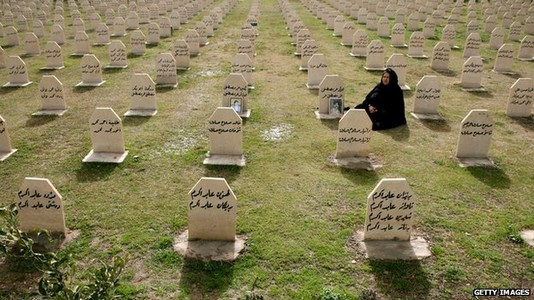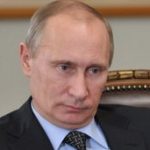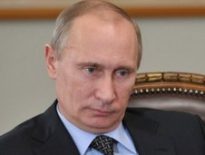Nearly 25 years ago, Iraqi forces killed thousands of their own civilians using chemical weapons on the Kurdish town of Halabja. Now steps are about to be taken to discover which country – and possibly which factory – supplied some of the chemicals.

The result of the chemical warfare attack on Halabja, on 16 March 1988, was one of the worst sights I have ever seen. Everywhere there were huddled bodies, lying in the street, sheltering against walls.
When I looked closer, I could see that many of them were protecting someone else, who was also dead: a baby, a child, a wife.
There was no protection against the nerve agents and gases which Saddam Hussein’s men had dropped indiscriminately on Halabja to teach its Kurdish inhabitants a lesson.
I had seen the results of chemical warfare against soldiers, earlier in the Iran-Iraq War; that was terrible enough. But seeing what these insidious, cruel gases did to wholly unprotected men, women and children was worse.
Sometimes the gases which the Iraqi air force had used had an almost instantaneous effect. I saw one house where a bomb had penetrated the ceiling of a room in which several people had been eating a meal.
All were dead; but it had clearly happened within a second or so. One old man had died as he bit off a piece of bread. Another was smiling, and seemed to have been cut off in the middle of a joke.
Other people had died slowly and in the most excruciating pain.
I saw a woman whose body was twisted almost into a circle, the back of her head touching her feet. There was vomit and blood on her clothes, and her face was contorted in agony.
Why had these people died? Because, in the last weeks of the Iran-Iraq War, Halabja had greeted the advancing Iranian troops with joy. Saddam Hussein and his cousin, Ali Hassan al-Majid, known as “Chemical Ali”, decided to make an example of them.
The Iraqi air force used a variety of chemicals against the town: nerve agents like VX, Sarin and Tabun, and the terrible but far more primitive mustard gas, the use of which dates back to World War I.
Nowadays, some of the bombs which were used are displayed at the museum in Halabja. Many are equipped with internal fans, which were used to mix the chemicals together.
There were two days of conventional bombing before the gas attack. It seems as though Ali Hassan al-Majid wanted to break the windows in the town, so there would be as little resistance to the gas as possible.
I was flown into Halabja, together with a small group of other foreign journalists, by the Iranian air force.
Iran’s government spotted the chance of a propaganda victory by showing the world the crimes which Saddam Hussein had carried out against his own people.
The Iranian authorities had prevented the survivors of the bombing from coming back to bury the dead, so they would still be there for us to see.
How many people died in Halabja? I wandered round counting the bodies with a Belgian chemical warfare specialist.
Time was short: the Iraqis knew we were there – our helicopters had been fired on as we came in – and their air force was thought to be coming back, perhaps with more chemical weapons to use against us.
Inevitably, our count was hasty and inadequate. But it seemed to us that there were the best part of 5,000 bodies lying around the town. Others had died on the outskirts, as they tried to cross the mountains into Iran.
This figure, vague though it is, is pretty much accepted by the various experts on the attack.
Yet a quarter of a century later, the horror is not over. Some of the mustard gas which was used is still present in the cellars of the town, where people took refuge during the bombing.
Unlike the nerve agents, which evaporated very fast, mustard gas is heavier than air. It sinks down and forms pockets which are still dangerous today.
When my team and I went down the steps of one house into the cellar, the gas residue, caught there in the old carpeting, made our eyes prickle and gave us headaches for hours afterwards.
On the floor lay the contorted bodies of a couple of rats and the skeleton of a cat which had died from breathing the gas. We were told that a man had died recently from inhaling it in another cellar nearby.
The leading British expert on chemical warfare, Hamish de Bretton-Gordon, who used to work at the Porton Down establishment – Britain’s military scientific facility – is discussing with the Kurdish government how to decontaminate Halabja.
“We have a problem around here when they are building new buildings, they dig the foundations, they come across these pockets of mustard gas… and people have died recently doing that,” he says.
“That is one task we are hoping we’ll help with – setting up our monitoring here, so that if we get an indication of gas in the area we can take measures [to ensure] that people aren’t exposed.
“Once Halabja is clean, if you like, the ability to develop the place at the rate the rest of the country is going, should be realised.”
Mr de Bretton-Gordon says it may also be possible to identify who supplied Saddam Hussein’s government with the basic chemicals used at Halabja.
“We expect to find samples of mustard gas in the mass graves, as we have done in the cellars,” he tells me.
“And if we can break it down to its base molecule components, we will be able to see what its signature is, and then we can match it against a sample.
This, he believes, will make it possible to work out which country, even which factory, supplied the original chemicals for the mustard gas – it will not be possible to trace the source of the nerve agents.
“It’s going to be difficult to get a test sample from the manufacturers who allegedly made it… if they handed it over and it matched, that’s irrefutable evidence, which the International Criminal Court and others would take a view on.
“But we know there are still some chemical stockpiles in Iraq that are being dealt with, which is open source information, and we can probably get a sample from there and match it against what we’ve found here to provide conclusive evidence – so technically it is possible.”
For now, the Kurdish Regional Government has yet to approve such plans. It says it wants to consult with a range of companies and with towns-people before it agrees to let so many mass graves be disturbed.
But there is a clear political sense that as long as those foreign companies that knowingly supplied these awful weapons remain unpunished, this tragic chapter will never fully be closed.
“I think we owe it to ourselves, to the victims, to really take a more in-depth look at what happened, how it happened,” says Qubad Talabani, a senior minister in the regional government and the son of Iraq’s current president.
And if the foreign companies who supplied the chemicals can be identified, might some kind of action be considered?
“Absolutely, absolutely. It’s something that we’re very serious about – the families of the victims are serious about.”
Russia, with its large chemical warfare capability, seems to have given Saddam Hussein the materials he asked for.
West Germany’s chemical industry was exempted at the time by the Bonn government from the international agreements forbidding the sale of chemical weapons. Other countries may have been involved.
So, has anything positive come from the terrible suffering of Halabja? Strangely, yes. The revelation of what had happened stirred the conscience of the outside world, and three years later led directly to the imposition by Britain and the US of a no-fly zone over northern Iraq.
This prevented Saddam from attacking the Kurds, and enabled them to flourish independently from the control of Baghdad.
The oil wealth of the 1990s and later has completely transformed the main cities of Kurdistan – Halabja included.
But no-one in the town can forget what happened that day in 1988. Discussing it still reduces entire classes of schoolchildren to tears.
Even now, men and women are developing cancers that may well be linked to the chemical effects of the bombing.
And thousands of people died in the most terrifying way imaginable.





